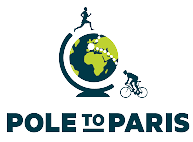Can a plane mirror produce a real image?
Can a plane mirror produce a real image?
As you mentioned, a plane mirror will produce a virtual image of a real object. But indeed, it is correct that a plane mirror will also produce a real image of a virtual object. This can occur when you have more than one optical element in the optical system.
Are plane mirrors virtual or real images?
virtual
Images formed by plane mirrors are virtual, upright, left-right reversed, the same distance from the mirror as the object’s distance, and the same size as the object.
How much does a plane mirror cost?
Mirrors can be plane (flat), concave (curving inward), or convex (curving outward). Most owners choose one of the former two for bedrooms and bathrooms….Bathroom Mirror Costs.
| Type | Average Cost |
|---|---|
| Door Mirror | $30 – $100 |
Which mirrors can form virtual images?
Virtual images can be formed by concave, convex and plane mirrors. Virtual images are not real; thus you could never see them when sighting in a mirror. Virtual images result when the reflected light rays diverge.
Can we see a real image without a screen?
No, real images cannot be seen without a screen. in a refracting telescope after passing through the objective lens, the image is not seen as the eye piece lens forms a virtual image which does not require a screen.
Which type of lenses and mirrors will form both real and virtual images?
Convex (converging) lenses can form either real or virtual images (cases 1 and 2, respectively), whereas concave (diverging) lenses can form only virtual images (always case 3).
Can we see virtual image?
Virtual images cannot be projected on the screen, but have a size and position. It can be seen and imaged by the human eye. Virtual images are formed when diverging rays are projected backwards and they appear to meet at a point.
Which type of mirror always forms a virtual and same size of the real object?
Plane mirror forms virtual and same size image of the object. In the case of a plane mirror, the distance between the object and the mirror (d1) is same as the distance between the image and the mirror (d2).
